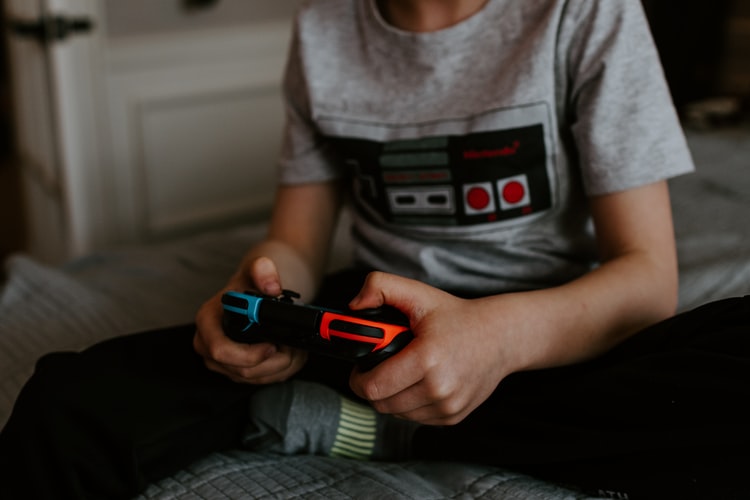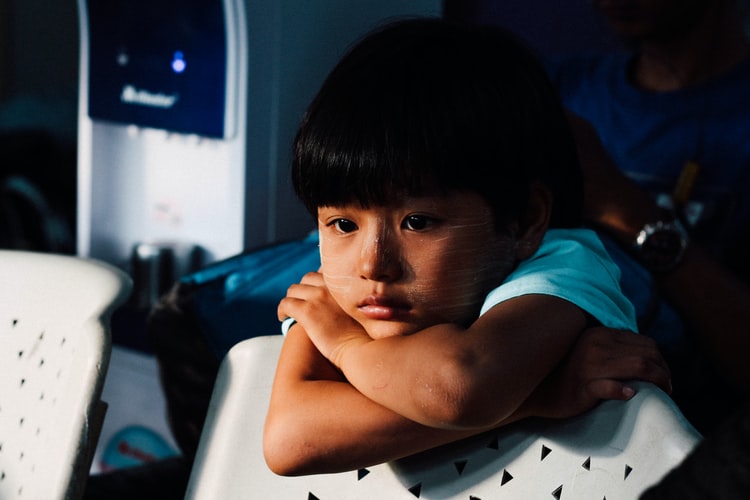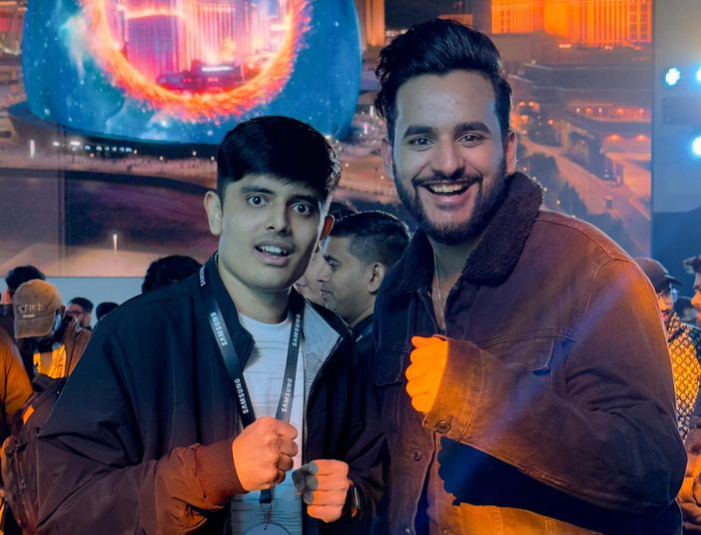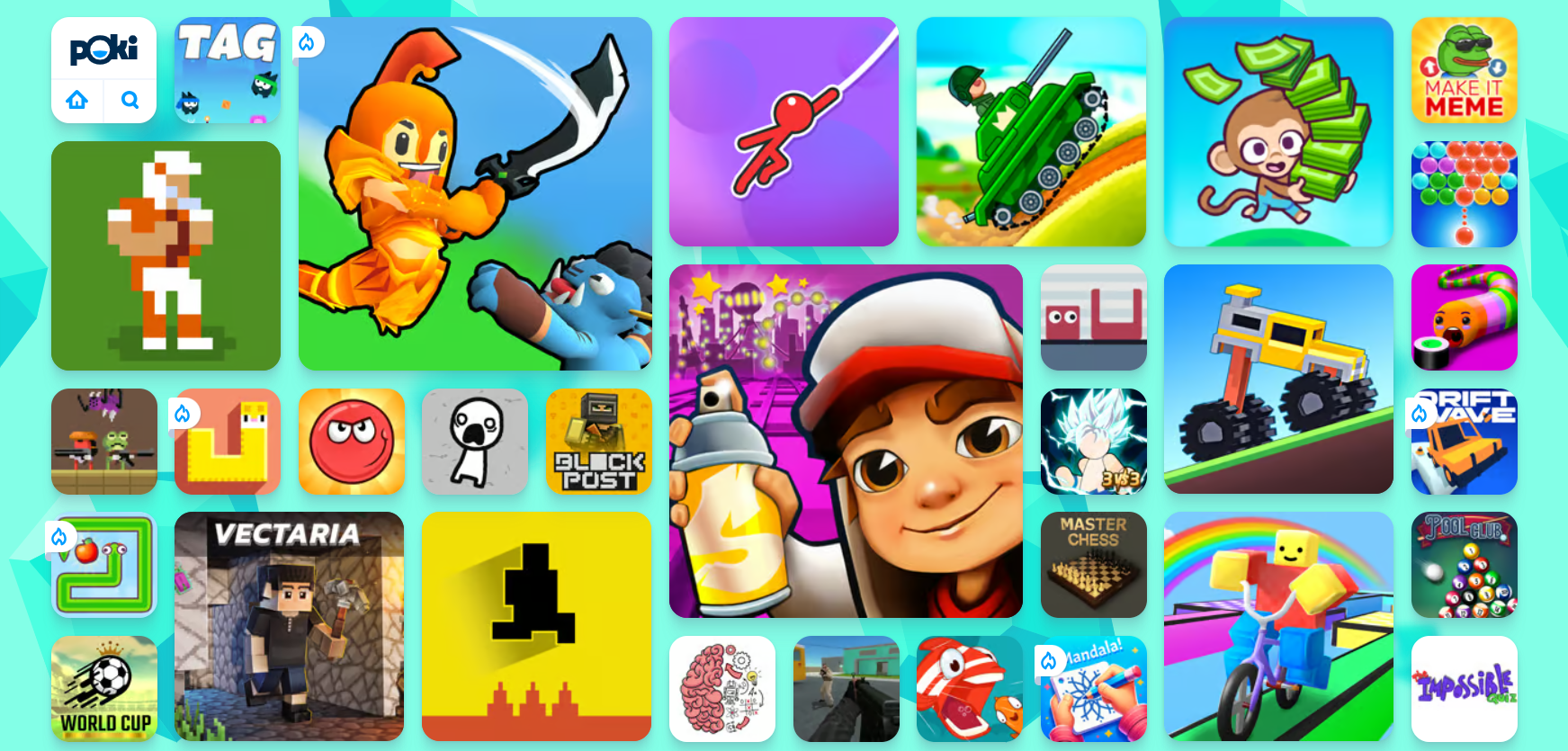Other
Why is Roblox Dangerous for Children and How to Protect Them

As parents, we’re constantly trying to make sure that our children are safe on the internet. And just because the content is rated safe for kids doesn’t always mean that it actually is. Roblox is an extremely popular game that has over 150 million monthly active users. We’d like to believe that all of these players are children since the game is targeted at a younger audience.
Roblox is a massively multiplayer online roleplaying game. This means that your child can create an ‘avatar’ that represents them, and then freely roam through a massive virtual universe. In this universe, they will find multiple Roblox worlds that host different kinds of games and adventures.
The appeal of Roblox is largely that you can create and play at the same time. This means that kids really get to use their creativity and imagination while building a game that they’d like to play themselves. While not directly educational, games like Roblox can have a huge benefit on the development of visual and spatial intelligence in younger children.
How does Roblox Work?
Roblox has many worlds that are created by players themselves. Your child can participate in lots of different games and compete with other players. Since this is a massively multiplayer game, not only can your child see their friends in the game, but also any other avatar from around the world logged in at the same time.
Avatars can compete with each other in games and also chat. In fact, many kids say that they’ve made their best friends on the game, from around the world. The virtual aspect of being able to meet other kids and make new friends is what children love so much.
Before we get into the potentially harmful aspects of the game, let’s spare a moment to talk about its merits. It’s an extremely well-made game with great design and lots of opportunities for kids to express their creativity. Children get to have their freedom to customize their avatar and assert their identity in a simulated world.
For kids, it’s thrilling to be in a world full of games and no adults!
The Dangers of Roblox

Since Roblox is a massively multiplayer game, the chat feature is available for your child to talk to anyone who’s logged in to Roblox. Additionally, your child can add or be added by anyone on Roblox as a Friend.
There are also no maximum age restrictions on the app. While the game is created for children, it doesn’t shut its gates to adults that want to play the game as well. This means that there could very well be adults using Roblox and pretending to be kids in order to get close to other children. Roblox also has a separate section for teenagers, players between the ages of 13 and 17. They have fewer privacy restrictions and can link their Roblox account to their social media handles as well as having a less moderated vocabulary.
Also, read how to become popular on Robolox
Roblox has employed a moderating team but it is impossible for them to moderate everything that’s going on in the massive universe with a large number of players. Profanity and swear words, as well as many inappropriate terms, are censored with a ‘####; if used in the chats, but there is no one to read the chats to see if any threatening or suspicious conversations are taking place.
A few years ago, a mother in North Carolina, Amber Peterson, was shocked to see her child playing Roblox and suddenly get sexually assaulted by three other virtual players. She immediately took the device away from the child and took to Facebook to express her horror at the incident. She said that words could not describe how traumatized and violated she felt to see what happened to her seven-year-old daughter’s avatar.
Another parent came forward on the platform Common Sense Media and spoke about how her 11-year-old daughter was propositioned. When the child said no, the other player picked her avatar up and threw her on a bed in the virtual world. On another day, the child was playing the game and her avatar was in the virtual hotel when a random character appeared in her shower.
Many parents, such as Shannon Mitchell from Sydney, report finding inappropriate messages on the chats with their children. A British father found similar messages in his eight year old son’s account with what seemed to be an adult. The stranger kept asking how old his son was and whether he was a boy or girl and then proceeded to compliment their appearance in a suggestive manner.
This can be shattering for a child to experience at such a young age. Like Amber Petersen says, a child’s innocence can be lost with the press of a button.
Young children do not know the difference between an avatar and real life. At this young age, they try to make their avatar as close to themselves as possible and identify as the avatar. The avatar isn’t just a representation, but an extension of themselves. Anything untoward or traumatizing that happens to their online avatar will be experienced as if it happened directly to them, and this can cause long-lasting damage to their psyche.
The Roblox user that had sexually attacked Amber Petersen’s daughter’s avatar had inserted an external code into the game that allowed him to perform those actions. It is not part of the game’s original code and actions, and the makers of Roblox assured parents that they were working towards securing Roblox so that it can’t be hacked again in the future.
How To Protect Children Using Roblox
It’s recommended that you take full advantage of the parental settings that are possible in Roblox by not letting your children talk to strangers, and not adding or allowing friend requests from any user that they don’t know in real life. You can also set a pin code that ensures that your child cannot adjust those settings.
If you’re concerned about your child being exposed to violence, there are ways to block games that have violence as well, so that your child doesn’t ever play games that put a weapon in his hand.
But even after putting all these restrictions, the most important form of protection is teaching your child about the dangers of the internet. It’s important to help them realize that the avatar is separate from themselves, and not a piece of them.
Child Development expert Dr. Deborah Gilboa suggests not letting kids below 8 years of age play these kinds of games since it’s difficult for them to separate reality.
It’s important to let children know that they can switch off the device, immediately leave the game if it ever looks scary or dangerous to them. Showing them these emergency exits can go a long way. Teaching them that online safety is just as crucial as looking both ways while crossing a road or strapping on a seat belt can help prepare for an undoubtedly tech-filled future that lies ahead of them.
Other
Ajjubhai UID: Free Fire Details & Earnings

Ajjubhai UID: Free Fire Id is 451012596. He is also known as ajjubhai94
Ajendra Variya , known as Ajju Bhai in the gaming world and is the king of the game Free fire. He is the owner of YouTube Channel Total Gaming with 37 million subscribers. A 29 year old from Ahmedabad, Gujarat, India has turned his passion into a career by launching the Total Gaming YouTube channel andhave started earning a hefty amount with his gaming obsession.
His style and techniques made him a professional player in the Free Fire community and stood as a support for the younger generation. His expertise includes PC and mobile games, from Free Fire and PUBG to GTA 5, Minecraft, BGMI, and Assassin’s Creed. Total Gaming has amassed millions of subscribers, making him one of the top content creators in the gaming community in India.
Ajju Bhai’s gameplay is often characterized by his skillful playing and engaging commentary, which has earned him a substantial following. He also occasionally posts content related to other games and engages in livestreams where he interacts with his fans. Ajay’s influence in the gaming community is notable, with a large number of young gamers looking up to him for tips, tricks, and entertainment.
Also Read: Redo of Healer Season 2: Release Date, Cast, And Character
Net Worth
As of 2024, Ajju Bhai’s net worth is more than Rs 1.3 crore. His income is a mix of gaming, and YouTube advertising, brand endorsements, advertising, and various business ventures. His success in the gaming industry has transformed him into significant financial rewards.
The Monthly earnings of Total Gaming ( Ajjubhai ) are between $19k – and $311k. And His Annual income is $233k – $3.7 Million. It means, on average Total Gaming earns 14,48,977.05 INR to 2,37,17, 466.45 INR per month. This is the estimated earning of Total Gaming from only youtube.
Also Read: Free Fire Auto Headshot Hack
Ajjubhai’s Free Fire ID, guild, rank
Ajjubhai’s Free Fire ID is 451012596, and he is a member of the TG MAFIA guild, whose ID number is 50920276. He is ranked platinum II in BR-Ranked (Battle Royale) and Gold I in CS-Ranked (Clash squad). Ajjubhai has played 9302 squad games and triumphed in 2414 of them for a win ratio of 25.95%.
He has notched up 34138 kills at a K/d ratio of 4.96 and inflicted 1536 average damage per match. In duo matches he has played 1587 games and stood victorious in 299 of them, at a win rate of 18.84%. With 6200 kills while maintaining a K/D ratio of 4.81. In solo mode, he has secured 76 wins at a win rate of 8.63% with 2237 kills at a K/D ratio of 2.78.
Also Read: Training Slayer Mod APK Download (Latest V50.0) For Android
FAQs
- 1. What is the Age of Ajju Bhai?
23, The age of Ajju bhai is 23. His Free Fire Id is 451012596. He is also known as ajjubhai94.
- 2. Who is Ajju Bhai in Free Fire?
Ajju Bhai is a very famous Free Fire player and content creator on youtube. He has more than 5 channels on youtube. He has more than 32 million subscribers on his main youtube channel named total gaming.
- 3. What is Ajjubhai’s Free Fire ID number?
Ajjubhai’s Free Fire ID number is 451012596.
- 4. What is the level of Ajjubhai94?
His current level is 74.
Also Read: How Old is Mitsuri: Every Main Characters Age, Birthday & Height
Conclusion
Ajju Bhai’s journey is a testament to the power of passion and dedication. From a college student passionate about gaming to India’s most subscribed gamer, his story is an inspiration for aspiring gamers around the world. As the Total Gaming community grows, Ajju Bhai’s influence on the gaming landscape is sure to endure.
Featured
Why was Michael Schumacher so good at Formula 1?

The extraordinary Michael Schumacher retired from Formula 1 back in 2012. Make now an online bet on sport – 1xBet also has all Formula 1 events too. However, even after all those years, fans still wonder how it was possible for him to be so good on the track. Let’s find out.
In 1st place we have talent. Schumacher had this incredible gift for driving. Picture him on the track. Here he was capable of doing 3 great things:
- handling his car beautifully;
- pushing it to its edge;
- and almost dancing with it on every tour.
It was like watching an artist at work, but on a racetrack. At 1xBet you can make online bets on sports, and Formula 1 is available too.
A lot of hard work
In 2nd place, we should say that Schumacher was the definition of hard work. He was dedicated to 3 big things: dedication to fitness, mental prep, and getting every detail just right. He treated every race like a mission, leaving no room for shortcuts. If you love Formula 1 you can go to 1xbet.pk/line – check sports betting on line and other great motorsports too.
A 3rd thing to mention is that Schumacher wasn’t just a driver; he was a technical genius. His understanding of how those Formula 1 machines worked was next-level. He’d dive deep into the nitty-gritty with the engineers, tweaking and fine-tuning the car to perfection. It was like he and the car spoke the same language. You can check on line sports betting at 1xBet if you want to wager on other extraordinary drivers too.
A consistent strategist
In 4th place, we may say that when the lights went out, Schumacher was cool as ice. Whether it was pouring rain or scorching sun, he had this uncanny ability to do 3 things: stay calm, make split-second decisions, and outsmart everyone else on the track. Currently you can get 1x app, where you can make Formula 1 wagers from your phone too.
A 5th factor to mention is that Schumacher wasn’t a 1-hit wonder. He was a maestro over the long haul. Year after year, he brought his A-game. And it wasn’t just about winning; it was about staying at the top.
A 6th aspect to mention is that, in the Ferrari days, which lasted between 1996 and 2006, Schumacher wasn’t just a driver; he was a leader. He brought the team together, motivated them like a coach in a locker room pep talk. The guy knew how to make everyone around him perform at their best. If you like Ferrari, you can get the 1x Bet app if you want to wager on their races too.
Records are the 7th factor, which Schumacher constantly shattered. In total he won 7 World Championships, 91 Grand Prix victories, 68 pole positions and 155 podiums. Thanks to all of this, his name is etched in the F1 history books.
Business
Introduction: Understanding the Importance of Computer Security

In an era dominated by digital advancements and virtual interactions, the protection of our most sensitive information has become a paramount concern. From personal data to financial transactions, the reliance on computers has made security breaches a constant threat in today’s interconnected world. The concept of computer security goes beyond just antivirus software and firewalls; it delves into the intricate web of technological vulnerabilities and human ingenuity that constantly push the boundaries of protection and exploitation. As we navigate through this digital landscape, understanding computer security becomes not only essential for safeguarding our personal information but also crucial for maintaining trust in e-commerce, online communication, and even national security.
Types of Cyber Threats
The concept of computer security has never been more crucial. With cyber attacks becoming increasingly sophisticated and prevalent, protecting our digital assets has become a top priority for individuals and organizations alike. From personal data breaches to large-scale ransomware attacks, the stakes are higher than ever in the world of computer security. The reality is that such scenarios are no longer far-fetched possibilities but genuine threats in our interconnected world. Understanding the intricacies of computer security is not just a matter of technical know-how; it’s about safeguarding our very livelihoods in this ever-evolving landscape of cyber warfare.
Best Practices for Securing Your Devices
From online banking to sharing personal information on social media, our reliance on computers and the internet has made us vulnerable to a myriad of cyber threats. As we navigate this virtual landscape, it becomes increasingly imperative to understand and implement robust computer security measures to safeguard our sensitive data from malicious actors. This is not a dystopian nightmare but a harsh reality for countless individuals who fall victim to cyber attacks each year. The interconnected nature of modern technology means that no one is immune from potential breaches in computer security. Whether you’re an individual user or a multinational corporation, the stakes are high when it comes to protecting digital assets and ensuring privacy in the digital domain.
Importance of Regular Software Updates
From personal data breaches to large-scale cyber attacks, the threat posed by malicious actors in the digital realm is a constant source of concern for individuals and organizations alike. As we navigate this complex landscape, understanding the principles and practices of computer security becomes not only essential for safeguarding our digital assets but also a fascinating window into the ever-evolving world of cybersecurity. These are just some of the real-world challenges that make computer security an intriguing and vital subject to explore. In this article, we will delve into the intricacies of protecting valuable data and systems from cyber threats, unraveling the strategies and technologies that form the backbone of modern-day defense against digital adversaries.
Educating Yourself on Phishing and Social Engineering
As we rely on computers and the internet for nearly every aspect of our lives, from personal communication to financial transactions and business operations, the need to protect our digital assets has become paramount. With hackers constantly evolving their techniques and exploiting vulnerabilities in software and hardware, the stakes are higher than ever. Understanding the principles of computer security is not just a matter of personal privacy or business success; it’s a fundamental requirement for safeguarding our digital existence in an increasingly digital world. From learning about encryption methods to understanding how malicious software operates, delving into the realm of computer security can be both enlightening and empowering. The field encompasses a wide array of topics including network protection, data integrity, access control mechanisms, threat detection strategies, and incident response protocols—ultimately constituting an intricate tapestry designed to keep your electronic life safe from harm.
The Role of Strong Passwords and Two-Factor Authentication
From personal data breaches to large-scale cyber attacks, the vulnerability of our digital world is a constant reminder of the need for robust measures to protect our information and systems. The intricacies of computer security extend far beyond mere antivirus software; they encompass complex algorithms, ethical considerations, and even psychological manipulation. As we navigate this rapidly evolving landscape, understanding the nuances of computer security becomes not just a matter of self-preservation but also a fascinating journey into the intersection of technology and human behavior. The very essence of computer security lies in its ability to adapt and anticipate ever-changing threats while balancing user convenience with stringent protection measures. It forces us to confront questions about privacy, surveillance, and even philosophical notions of trust in an interconnected world.
Conclusion: Taking Responsibility for Your Online Security
The increasing prevalence of cyber threats and the potential harm they can cause highlight the importance of remaining vigilant and proactive in protecting our digital lives. Firstly, constant awareness is crucial. Stay updated with the latest news and advancements in computer security, as well as emerging threats. Regularly educate yourself on best practices for secure online behavior, such as using strong passwords, being cautious when clicking on links or downloading files, and enabling multi-factor authentication whenever possible. Secondly, invest in reliable antivirus software and a robust firewall to defend against malware attacks that could potentially compromise your personal information. Keep these tools up-to-date by installing updates regularly to ensure you are protected from new vulnerabilities.
-

 Guides4 years ago
Guides4 years ago6 Proven Ways to Get more Instagram Likes on your Business Account
-

 Mainstream9 years ago
Mainstream9 years agoBioWare: Mass Effect 4 to Benefit From Dropping Last-Gen, Will Not Share Template With Dragon Age: Inquisition
-

 Guides2 months ago
Guides2 months agoExplore 15 Most Popular Poki Games
-

 Guides1 year ago
Guides1 year agoGan Rubik’s Cube vs. Traditional Rubik’s Cube: Key Differences and Advantages
-
Mainstream14 years ago
How to Fix Modern Warfare 2 Problems/Freezings
-

 Mainstream11 years ago
Mainstream11 years agoNew Assets Found for Half Life Episode 4
-
Guides15 years ago
GTI Club+: Rally Cote d’Azur – PS3 Cheats
-

 Casual5 months ago
Casual5 months ago8 Ways to Fix Over-Extrusion and Under-Extrusion in 3D Printing
